In this article, you will learn What are the 9 different types of Sheet Metal Operations with diagrams and also you can download the pdf file of this post.
Sheet Metal Operations
Following are the 9 different types of sheet metal operations:
- Shearing Operations
- Blanking Operations
- Punching Operations
- Piercing Operations
- Trimming Operations
- Drawing Operations
- Embossing Operations
- Bending Operations
- Squeezing Operations
1. Shearing
It is a cut in a straight line across a strip, sheet or bar. It leaves a lean edge on the piece of metal is sheared or cut. In this operation, a sheet metal workpiece is placed or kept between two dies from one end. And, the punch is hit at the other end of the sheet, producing a shearing effect.
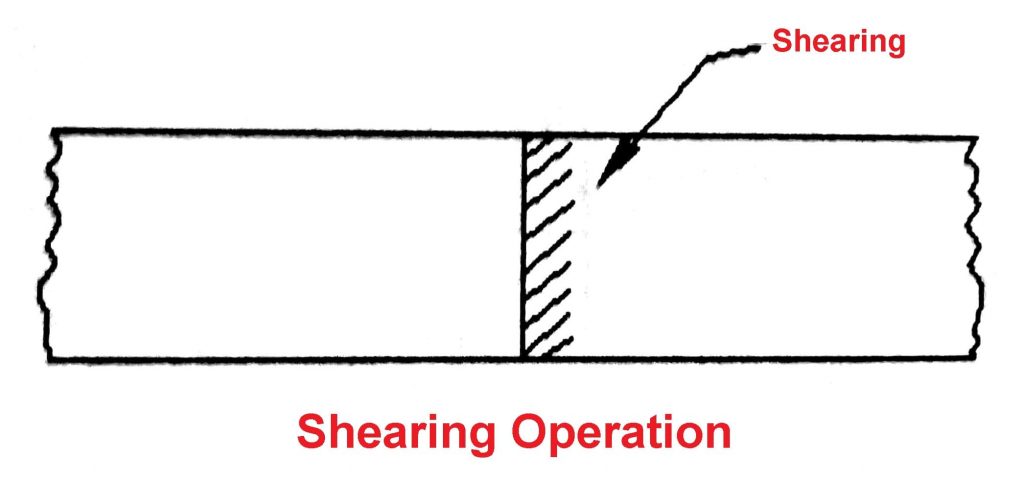
It has 3 basic stages:
- Plastic deformation
- Fracture
- Shear
a) Plastic Deformation
When a metal is placed between the upper and lower blades of the shear and pressure is applied, plastic deformation takes place. It extends into metal for about 5 to 40% of metal thickness.
b) Fracture
At the point of greatest stress concentration fracture takes place.
c) Shear
Small fractures are found and the metal is sheared.
2. Blanking
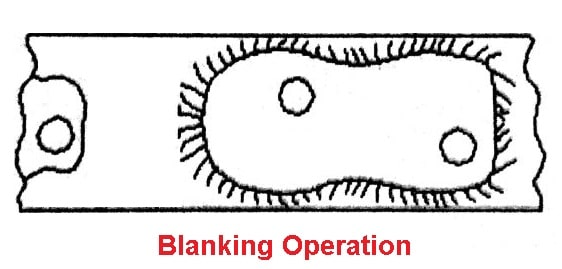
It is an operation of cutting a whole piece from sheet metal. In which enough scrap is left all around as shown in fig. A punch and die is applied for this type of sheet metal operation.
3. Punching
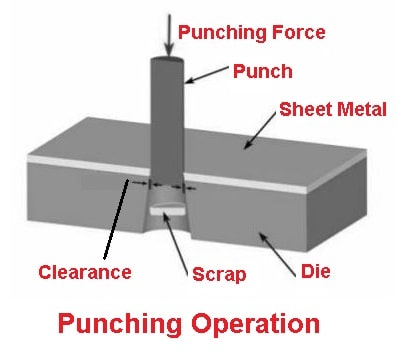
It is an operation of producing circular holes on a sheet of metal by a punch and die. This is the exact opposite of blanking but the operation is nearly the same. A Punch and die are further used here such as blanking operations.
4. Piercing
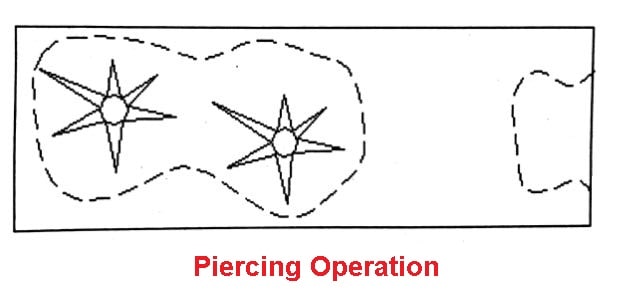
Piercing is the process in which desired shape holes are produced in a piece of sheet metal without eliminating any material from the sheet or removing a very small amount of material as shown in the figure. Both punch and die are also applied in this operation. The punch used in the piercing operation is usually bullet-shaped.
5. Trimming
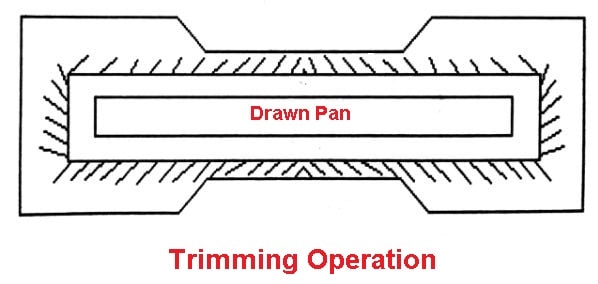
The trimming operation is also known as shaving operation. It is a finishing operation by removing the burrs from the cut edges is taken out in order to make edges smooth and also provide dimensional accuracy.
6. Drawing
It is an operation of producing thin-walled hallows or vessel shaped parts from sheet metal. It can be divided into two categories:
- Deep drawing
- Shallow drawing
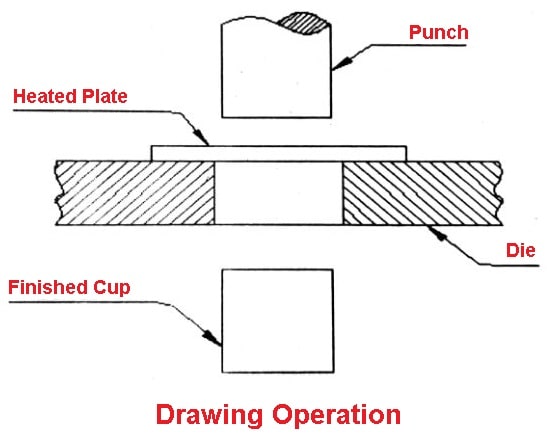
a) Deep Drawing
The length of depth of the object to be drawn is deeper than its width.
b) Shallow Drawing
The length of the object to be drawn is less than its width. The examples of drawing are pans, tubes and cams.
Read also: Drilling machine – Parts, It’s Types, Operations with PDF
7. Embossing
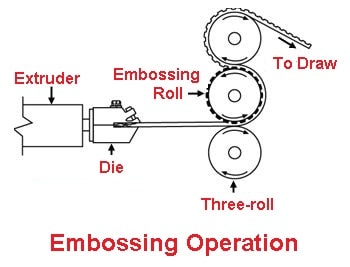
It is the metalworking operation which is used to create raised surfaces or lettering in sheet metal. There is no change in metal thickness during this operation.
8. Bending
It occurs when forces are applied to localized areas. Here the metal flow is uniform along the bend axis with the inner surface in compression and outer surface in tension.
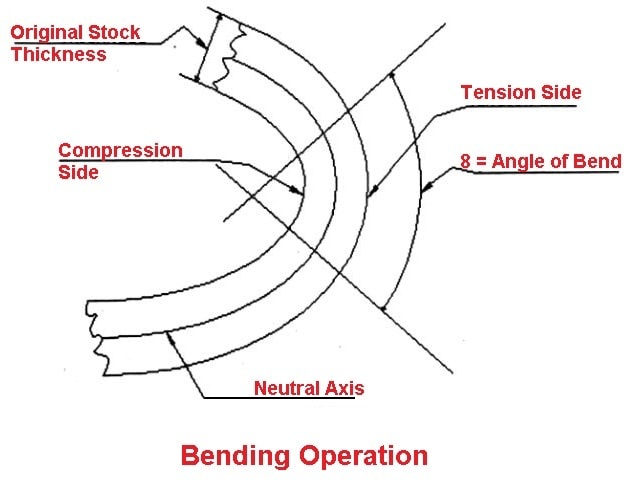
Types of bending
- Edge bending
- V-bending
- U-bending
- Offset bending
- Channel bending
1. Edge Bending
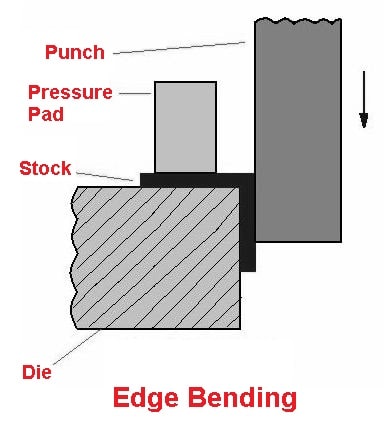
It is a type of bending operation, In which a piece of sheet metal is fixed or held between two dies from one end, as shown in the fig. Then the other end is forced to strike upon the punch which is free or unfixed. Thus, the free or unfixed edge of the sheet metal piece is bent to make the forming process.
2. V-bending
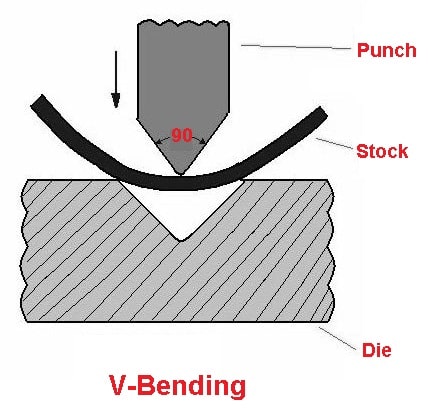
In these type of bending operation, when a piece of sheet metal is pressed between the die and the punch; It is formed into a V-shape in the die.
3. U-bending
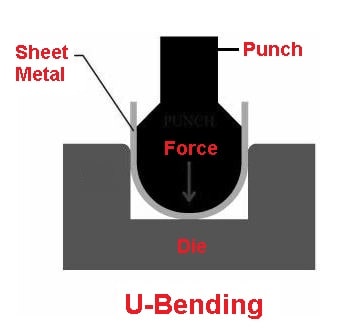
In this type of a bending operation, in which when the punch is pressed by a force to move into the die, the sheet metal piece gets formed into a U-shape.
4. Offset Bending
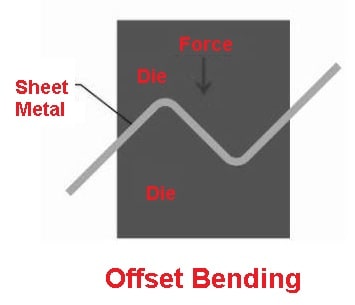
It is a type of bending operation, in which a piece of sheet metal is formed into an offset shape with the help of a punch and die.
5. Channel Bending
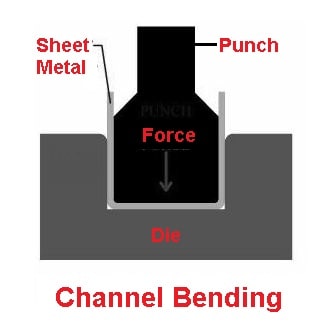
In this type of a bending operation, in which when a force is used to the punch to move into the die, the sheet metal piece, in between the punch and die, gets the shape according to the shape of the die and punch i.e. a channel shape.
9. Squeezing
It is a quick and widely used way of forming ductile metals. It has different operations such as sizing, coining, riveting etc.
1. Sizing
Sizing operation is a squeezing operation that reduces the thickness of the metal. The sizing is done in an open die and only the surface where the die and workpiece touch will be sized.
2. Coining
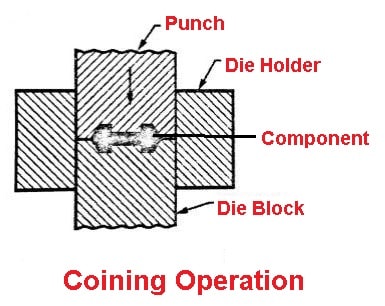
It is a process of pressing metal in a die so that it flows into the die space. For example Medals, Coins, and Jewellery.
The sheet metal operation depending on the type of stress-induced:
| SI.No. | Stress Induced | Operations |
| 1. | Shear | Shearing, Blanking, Piercing and Trimming |
| 2. | Tension | Stretch forming |
| 3. | Compression | Coining and Sizing etc |
| 4. | Tension and Compression | Drawing, Bending, Forming etc |
Download PDF of this article
That’s it, Thanks for reading. I hope you find this article helpful if yes, please share this with your friends. If you have any questions about “Sheet Metal Operations” ask in the comments I’ll respond to you.
Read Next:

amazing
Thanks.
hey, I saw your blog its amazing.
Thanks for your feedback.